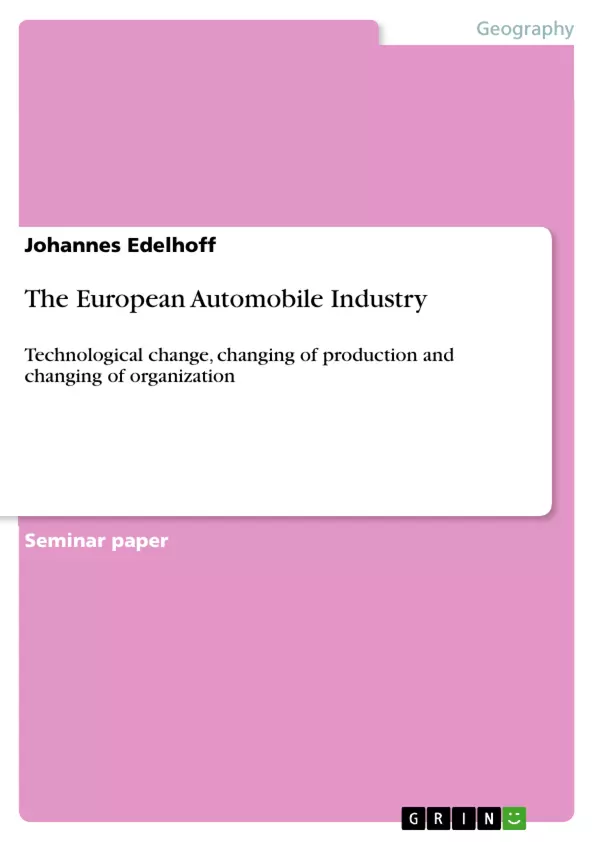Wirtschaftsgeographie, Arbeit über geographische Verteilung und Dynamik sowie den Einfluss von betriebswirtschaftlichen Organisation- und Produktionsformen auf die geographische Verteilung der Automobilindustrie. Blick auf portugiesische Automobilindustrie
Inhaltsverzeichnis (Table of Contents)
- Introduction.
- The European automobile industry in global markets
- Output........
- Global trade and its affect on Europe....
- The influence of demand on automobile industry...
- Technological change, changing of production and changing of organization of production
- From craft Production to mass production.
- Lean Production in Europe...
- Strategic Alliances and collaborations
- Greenfield Investment.
- Jobs in automobile Industry
- Labour force.
- Structure of labour..
Zielsetzung und Themenschwerpunkte (Objectives and Key Themes)
This work examines the European automobile industry, outlining its strengths and challenges. The primary focus is on understanding the industry's global context, production changes, and the impact on employment in Europe.- The European automobile industry's position within global markets
- Changes in production and organizational systems of vehicle producers
- The development of work and jobs in the European automobile industry
- The influence of global trade and demand on the European automobile industry
- The role of technological advancements in shaping the industry
Zusammenfassung der Kapitel (Chapter Summaries)
Introduction
The introduction establishes the significance of the automobile industry as a key industry in the late 20th century, highlighting its global reach and impact on employment. It introduces the concept of globalization in the industry, emphasizing the role of foreign direct investment, strategic alliances, and transnational trade.The European automobile industry in global markets
This chapter explores the European automobile industry's role within global markets. It discusses the historical development of production output, emphasizing the dominance of the Triad (Europe, North America, and Japan). The chapter also highlights the evolution of production from a primarily American-dominated market to a tri-polar market with increased Japanese influence.Technological change, changing of production and changing of organization of production
This chapter examines the evolution of production methods within the European automobile industry, tracing the shift from craft production to mass production and the subsequent adoption of lean production techniques. It also discusses the increasing importance of strategic alliances and collaborations and the role of greenfield investment in shaping the industry landscape.Schlüsselwörter (Keywords)
The key concepts and terms explored in this work include the European automobile industry, globalization, foreign direct investment, strategic alliances, production systems, lean production, craft production, mass production, employment, and the Triad.
Excerpt out of 18 pages
- scroll top
- Quote paper
- Johannes Edelhoff (Author), 2004, The European Automobile Industry, Munich, GRIN Verlag, https://www.grin.com/document/128175
Look inside the ebook



